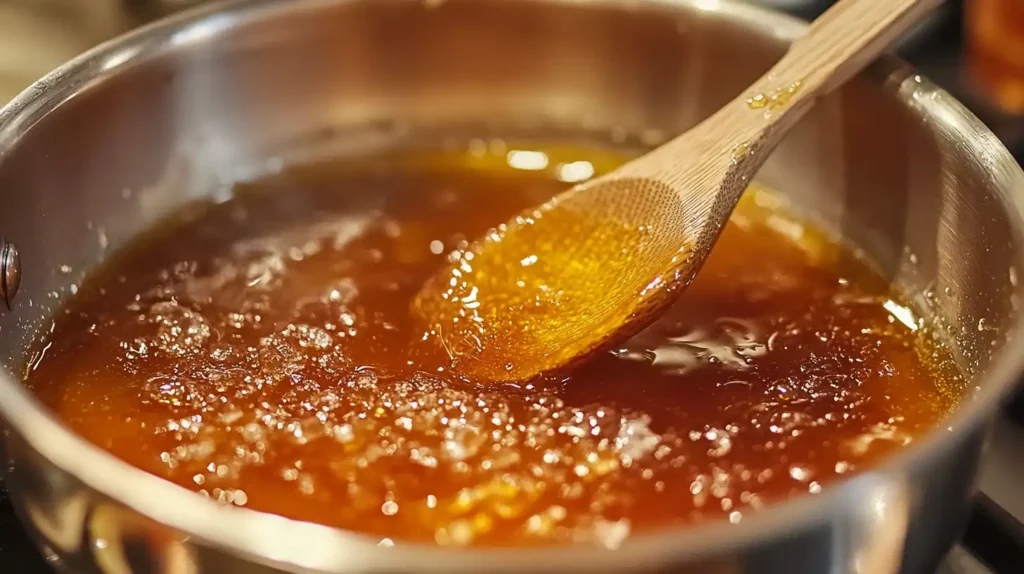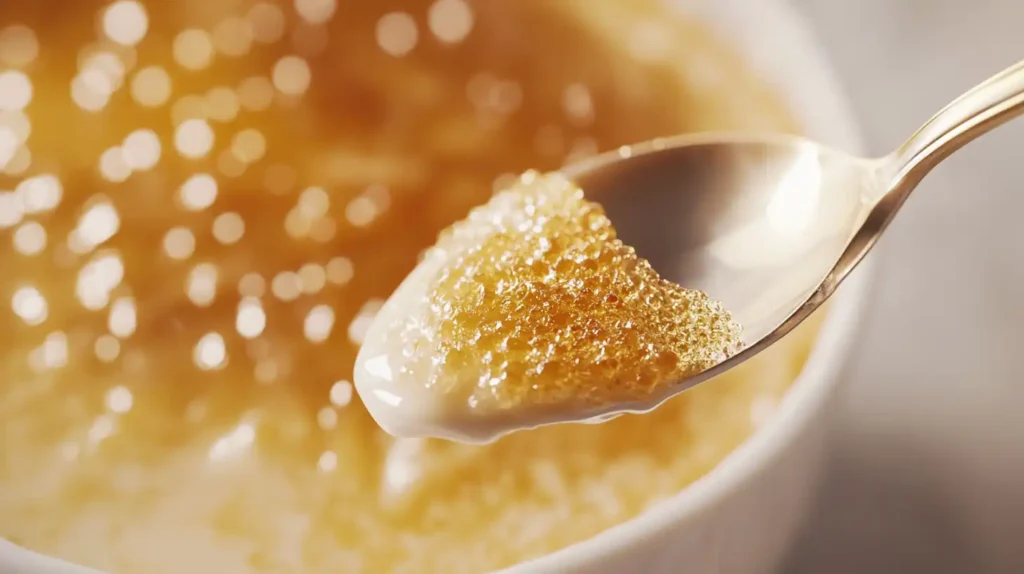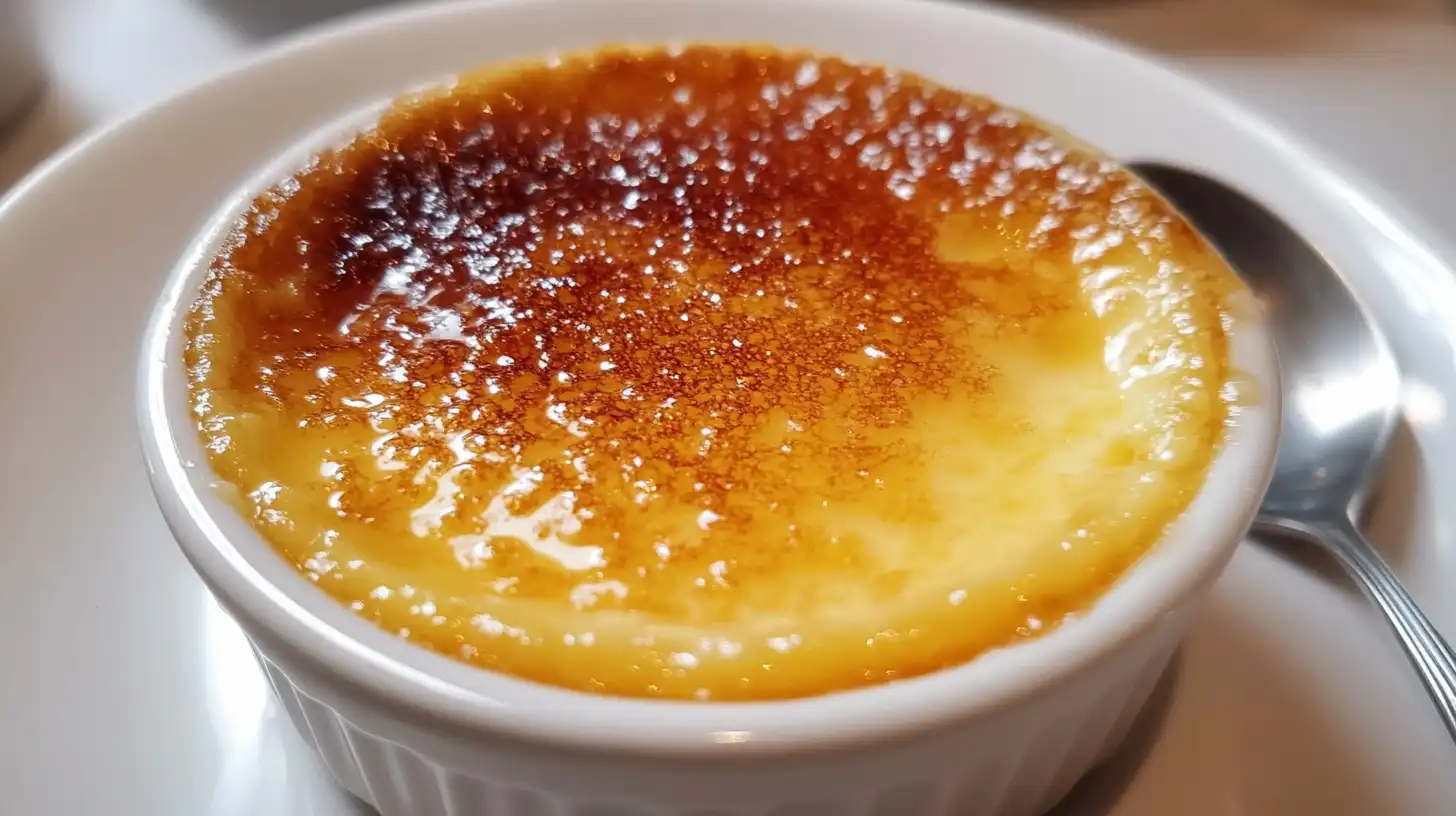How to Crisp the Top of Crème Brûlée Without a Torch? Crème Brûlée is a classic French dessert known for its creamy custard and crispy, caramelized topping. The traditional way to create that sugar disc is with a kitchen torch, but what if you don’t have one? Well, then this guide is perfect for you because we’ll explore five easy alternative ways to create that loved crisp top of crème brûlée with just common kitchen tools. Let’s get started making this mouth-watering dessert!
The Secret Behind Crème Brûlée’s Crunchy Top
What Creates the Hard Top on a Crème Brûlée?
The golden, crispy layer on crème brûlée is formed by caramelizing sugar. When exposed to high heat, sugar melts and undergoes caramelization, turning into a glass-like crust. If you’re wondering how to crisp the top of crème brûlée without a torch, the key is using alternative heat sources to achieve that perfect crunch. This contrast between the creamy custard and the crunchy top is what makes crème brûlée so irresistible. No matter which method you use, understanding how to crisp the top of crème brûlée without a torch ensures a delicious result every time.
Best Sugars for Caramelization
Not all sugars caramelize the same way. Here are the best options:
| Sugar Type | Caramelization Effect | Best Used With |
|---|---|---|
| Granulated Sugar | Even browning, crisp texture | Most traditional method |
| Brown Sugar | Adds deep caramel flavor | Works well but may burn faster |
| Turbinado Sugar | Coarse texture, slow melting | Ideal for a more complex crunch |
| Powdered Sugar | Caramelizes quickly, thin crust | Best for delicate brûlée |
Now, let’s dive into the five best ways to achieve a crisp crème brûlée top without a torch.
1. Using the Broiler
How to Get a Crunchy Top on Crème Brûlée in the Oven
Your oven’s broiler is an excellent alternative to a torch. It provides intense heat from above, which can quickly caramelize the sugar.
Steps to Use the Broiler:
- Preheat your oven’s broiler to high.
- Sprinkle an even layer of sugar over the chilled crème brûlée.
- Place the ramekins on a baking sheet and position them under the broiler, about 2–4 inches from the heat source.
- Watch closely! The sugar will start melting and caramelizing within 1–3 minutes.
- Remove when the top is golden brown and allow it to cool for a crisp texture.
Pros:
✔ Easily accessible in most kitchens
✔ Can caramelize multiple ramekins at once
Cons:
✘ Can heat the custard too much if left too long
✘ Requires careful monitoring to prevent burning

Looking for more ways to crisp your crème brûlée? Follow this detailed guide on how to make the top of crème brûlée crispy for a flawless finish every time.
2. Using a Metal Spoon
Can You Use a Lighter Instead of a Torch for Crème Brûlée?
A lighter doesn’t generate enough consistent heat, but a heated metal spoon works surprisingly well.
Steps to Caramelize with a Spoon:
- Heat a large metal spoon over an open flame on a gas stove or using a candle.
- Once extremely hot, press the back of the spoon gently onto the sugar layer.
- Lift and reheat the spoon as needed, covering all areas evenly.
- Let the sugar cool and harden before serving.
Pros:
✔ No need for special equipment
✔ Creates an even caramel layer
Cons:
✘ Can take longer to finish each ramekin
✘ Requires caution when handling the hot spoon
3. Caramelizing Sugar Separately
What Can I Use if I Don’t Have a Crème Brûlée Torch?
Another option is to caramelize the sugar separately and then pour it over the dessert.
Steps to Caramelize Sugar on the Stove:
- In a small saucepan, heat ¼ cup of sugar over medium heat.
- Stir continuously until the sugar melts and turns golden brown.
- Quickly drizzle the hot caramel over the chilled crème brûlée.
- Allow it to harden before serving.
Pros:
✔ Doesn’t risk warming up the custard
✔ Ensures even caramelization
Cons:
✘ Requires careful timing to prevent burning
✘ Harder to control thickness

4. Using a Kitchen Torch Alternative: Searing Iron or Salamander
A searing iron or a cast-iron press can work similarly to a torch. These tools provide direct heat, perfect for caramelizing sugar.
Steps to Use a Searing Iron:
- Heat a metal searing iron or a cast-iron skillet over high heat.
- Once red-hot, press it lightly onto the sugar layer.
- Move it around gently to ensure even caramelization.
- Allow the caramelized sugar to cool and harden.
Pros:
✔ Gives a professional-quality brûlée top
✔ Works quickly
Cons:
✘ Requires an extra tool
✘ Can overheat the sugar if not careful
5. Using a Blow Dryer or Heat Gun
A heat gun or a strong blow dryer on high heat can generate enough warmth to melt sugar.
Steps to Caramelize with a Heat Gun:
- Hold the heat gun about 2 inches above the sugar layer.
- Move it in a circular motion until the sugar melts and browns.
- Let it set for a few minutes before serving.
Pros:
✔ Works well if no other heat source is available
✔ Easy to control caramelization level
Cons:
✘ Takes longer than other methods
✘ Requires patience for even browning
Want to know what makes crème brûlée truly special? Learn more about the secret to crème brûlée and how to perfect its creamy custard and caramelized top.
FAQs About Caramelizing Crème Brûlée
How to Get a Crunchy Top on Crème Brûlée?
Use granulated or turbinado sugar, ensure an even layer, and apply high heat using a broiler, heated spoon, or a stovetop method.
What Can I Use If I Don’t Have a Crème Brûlée Torch?
Try a broiler, a heated metal spoon, caramelizing sugar separately, a heat gun, or a searing iron.
Can You Use a Lighter Instead of a Torch for Crème Brûlée?
A lighter does not produce enough heat to caramelize sugar effectively. A heated metal spoon or broiler is a better alternative.
What Creates the Hard Top on a Crème Brûlée?
Caramelized sugar forms the crunchy layer. The process requires dry heat and high temperatures to melt and harden the sugar.

Conclusion
You now know how to make the crisp top of crème brûlée using an oven’s broiler, a heated spoon, a stovetop caramelization method, a searing iron, or a blow torch. If not having the right tool to perfect that caramelized topping is what has been stopping you, then you are now ready to finally try. Don’t let its perfect appearance intimidate you, use the tools in your own kitchen to create that perfectly crisp disc. Choose the technique that best suits you, and give it a go in your own kitchen!

